Part 1:
“Pondering” the construction of the Plaza Hotel
In 1883, the south east corner of Central Park was a remote spot of the city with goats roaming at the intersection of Fifth Avenue at Grand Army Plaza which was soon to become one of the most prized pieces of real estate in Gotham. The Vanderbilts, always in competition with the Astors to be crowned the most prominent family in New York, continued with their building spree on Fifth Avenue, which was nicknamed “Vanderbilt Row.” Their building at the corner of 58th Street and Fifth Avenue was their new “Petit Chateau,” that is to say, a massive 130-room French-Renaissance style mansion which had on its side, between 58th and 59th Streets, a pond that in winter transformed itself into New York’s favorite skating rink. This spot, where the first Plaza Hotel was built is still after more than 150 years one of the most loved meeting places for New Yorkers. Just opposite the square was the Plaza’s competitor, the Savoy Hotel; next to it on 60th Street, the New Netherland Hotel followed and, finally one block up, the Metropolitan Club, founded in 1891 by J.P Morgan, gained the nickname of the “Millionaire Club.” It was the beginning of an incredible journey for Gotham and for these iconic hotels including the most recognizable of all, the Plaza.
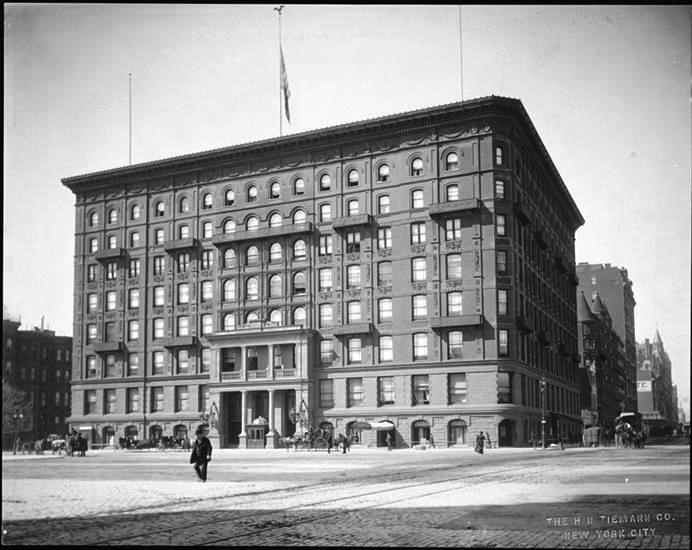
Third Time’s a Charm
At its opening, the first Plaza Hotel was not very successful. The design was already dated and the hotel had received bad reviews. Even the “design intervention” of famed architects McKim Meade & White did not save the hotel which, not even two decades from its construction, was demolished in 1905.
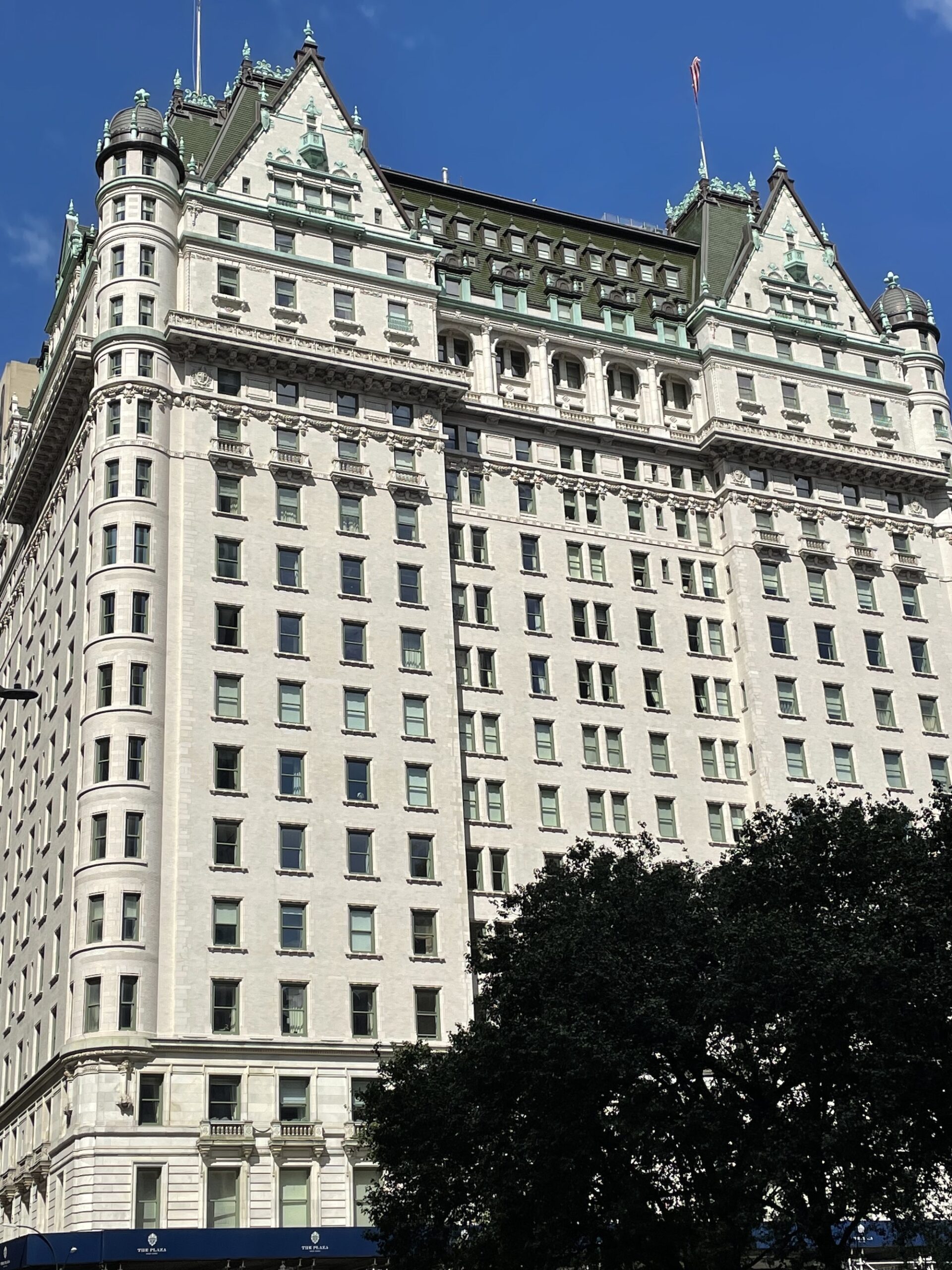
The second Plaza Hotel was designed by architect Henry Hardenbergh, who had famously built the Dakota Apartments, the Waldorf & Astoria Hotels and the Willard Hotel in Washington. Hardenbergh built the new 21-story Plaza Hotel overlooking Central Park in a French-Renaissance inspired chateau style with marble columns, turrets, pilasters and balconies surrounding the top of its white brick façade, and topped the building with a mansard copper roof. At first the Plaza seemed to have all the grandeur needed to succeed, but apparently it was not grand enough. Between 1919 and 1922 it was reconfigured for a third time with French marble lining the walls of the main entrance and the dazzling lobby, which also moved to 59th Street and 5th Avenue. Everything was custom made and expensive, from the 1,650 crystal chandeliers down to the gold-rimmed flatware.

The stunning Palm Court tea room with its ornate Tiffany stained-glass dome ceiling and four marble caryatides (brought in from an ancient Italian Palace) was the place where, as recorded by the New York Times, famous British Actress Mrs. Patrick Campbell provoked a scandal when she dared to light up a cigarette in public.
She was immediately told to put it out, at which point she blew smoke in the waiter’s face and replied, “My dear fellow, I have been given to understand that this is a free country. I intend to do nothing to alter its status.”
After this episode in 1908, several of the most popular New York’s restaurants also announced that they would allow women to smoke.
Grant Sherman a spot
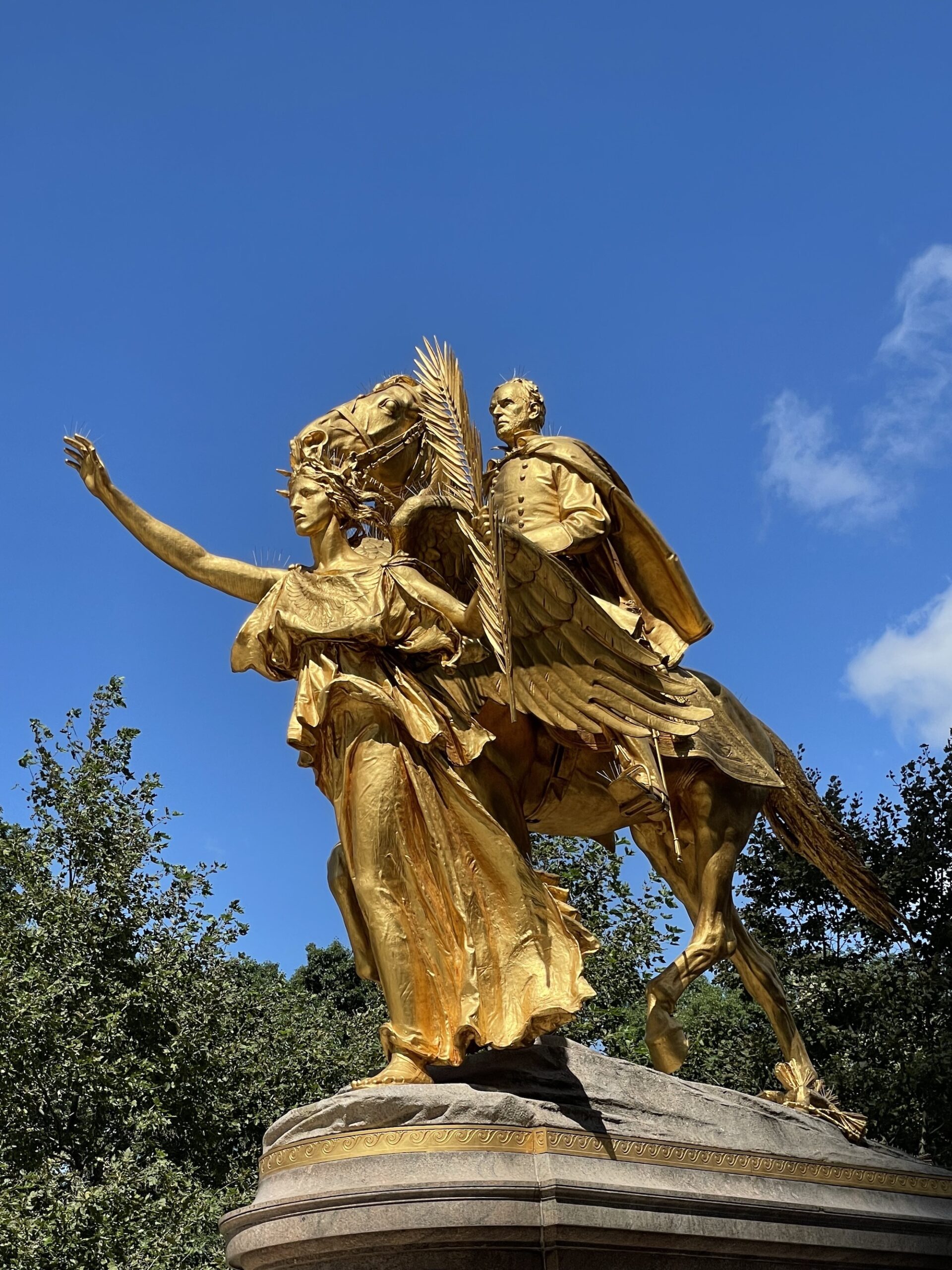
After riding his horse all the way to Atlanta to burn down the confederacy, General Sherman wandered around New York until his gilded statue by Augustus Saint-Gaudens was finally placed in Grand Army Plaza in 1903.
The statue was originally supposed to stand in front of Grant’s tomb, but the Grant family, thinking that the statue would overshadow the President’s tomb, denied him the spot. General Sherman ended up winning another war and got himself a prime location in Grand Army Plaza guided by the Greek Goddess of Victory, Nike.
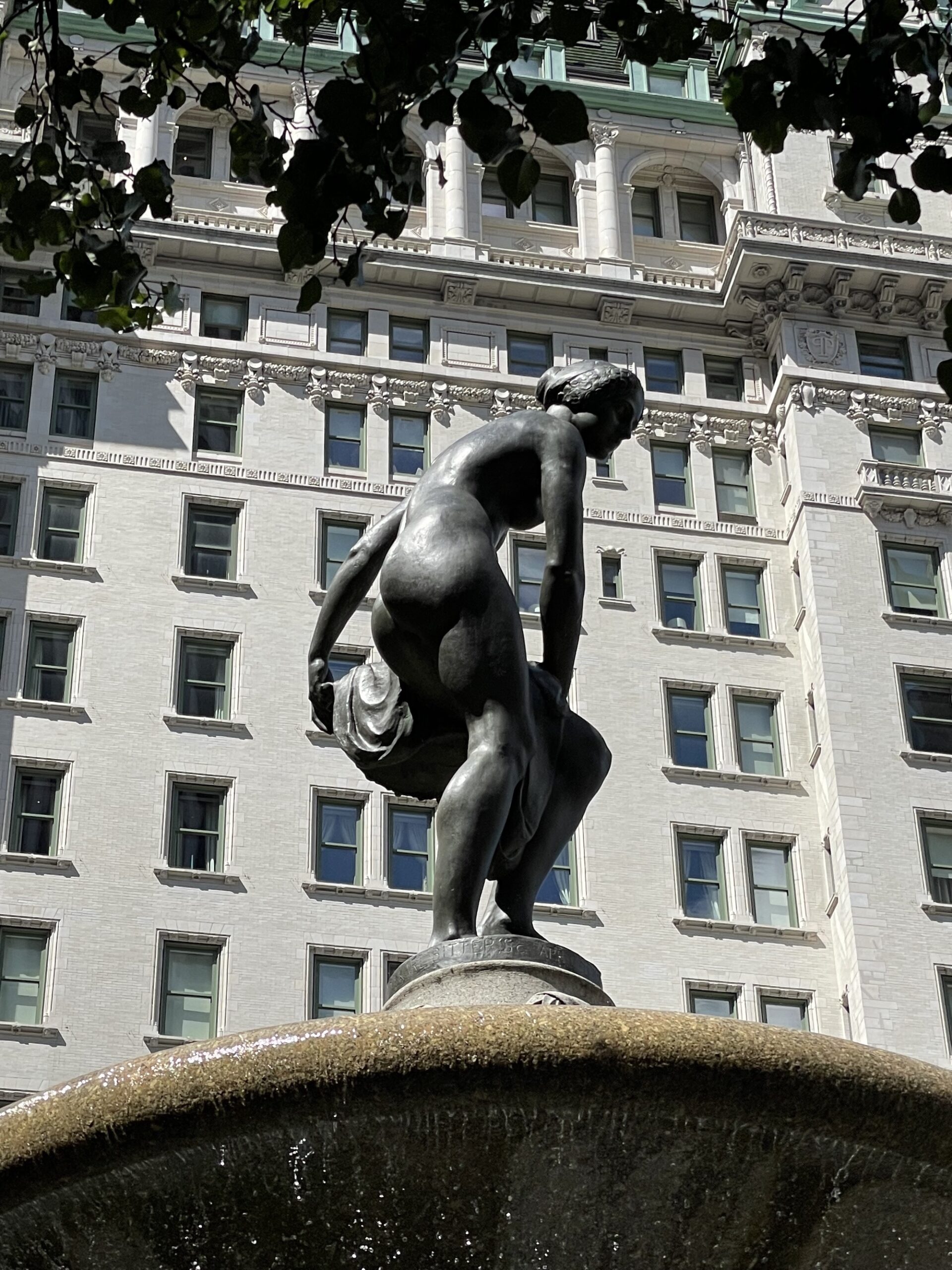
Butt…
A competitor Goddess stole the scene in Grand Army Plaza. It was Pomona, the Roman Goddess of abundance, who still stands on top of the fountain commissioned in 1911 by publisher Joseph Pulitzer and built next to the new Plaza Hotel. His designer, architect Karl Bitter, had hired “America’s first supermodel,” Audrey Munson, to pose for the statue. Audrey Munson was a strong and independent woman who was to America, what “Marianne” was to France. You can recognize her as gilded Columbia Triumphant at the at other entrance of Central Park South, as the face of the two statues of Brooklyn and Manhattan at the entrance of the Brooklyn Museum or as the gilded “Civic Fame” on top of the Manhattan Municipal Building. As Pomona she witnessed all that happened in Grand Army Plaza including, during the Jazz age, the irreverent couple of Scott Fitzgerald and his wife Zelda, who were staying at the Plaza Hotel, jumping and splashing in the fountain beneath her in a very New York “Dolce Vita” style moment.
It is ironic, however, that the first guest to stay at the Plaza Hotel happened to be Alfred Gwynne Vanderbilt, who was living next door at lavish Vanderbilt mansion. Alfred had probably sneaked out of his mansion to check into the Plaza hotel, tired of listening to his mother, Alice Vanderbilt complain about Pomona showing off her naked derrière just in front of her bedroom window.
Milking success
The Astors had built yet another hotel, the New Netherland, which was next to the Savoy and on the other side of the square from the Plaza Hotel. It was a stunning 17-story edifice built out of brown brick with brownstone Romanesque arches and a mansard roof crowned with a balustrade which resembled in its style the original Waldorf-Astoria hotel on 33rd Street and Fifth Avenue. The New Netherland managed by Ferdinand Earle went bankrupt shortly after its opening, due in large part to his expensive taste in decorating the hotel with plenty of silver, antiques, marble, oak, Tiffany lamps and original paintings scattered throughout.
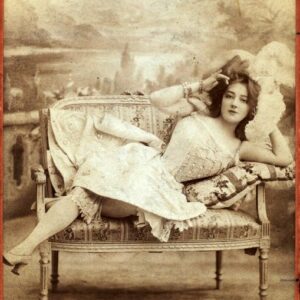
One of the New Netherland’s clients was the beautiful French singer Anna Held, who was hired by impresario Florenz Ziegfeld to be the new star of his shows.
As reported by the New York Times, in 1896 she checked into the New Netherland Hotel and requested 40 gallons of milk every day for her bath. After using 320 gallons of milk, she refused to pay, claiming that the milk lacked a “creamy essential quality.” She got sued.
However, the milk must have had some beneficial effects since Florenz Ziegfeld ended up asking Anna to marry him in the suite of the New Netherland.
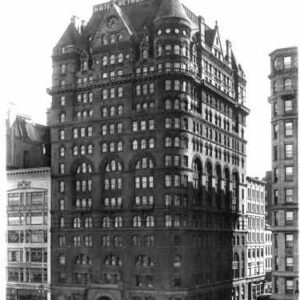
Although in 1893 the New York Times reported that “the new Netherland….is a palace for a king, magnificent in its appointments, solid and durable at the ages,” by 1926 the hotel had lost its appeal and was demolished.
It was shortly rebuilt by the ice cream magnate Louis Sherry who named the new hotel the “Sherry-Netherland.” This stunning Neo-Romanesque and Renaissance style hotel with brown bricks and tawny-colored terra cotta tiles, turrets, gargoyles and Gothic minarets was built in 1927 by architects Leonard Schultze & Fullerton Weaver.
Its lobby was inspired by the Vatican Library with its friezes rescued from the Vanderbilt mansion that had just been demolished a couple of blocks south of Grand Army Plaza to make room for the high-end department store Bergdorf-Goodman.
Royals and dog fight…
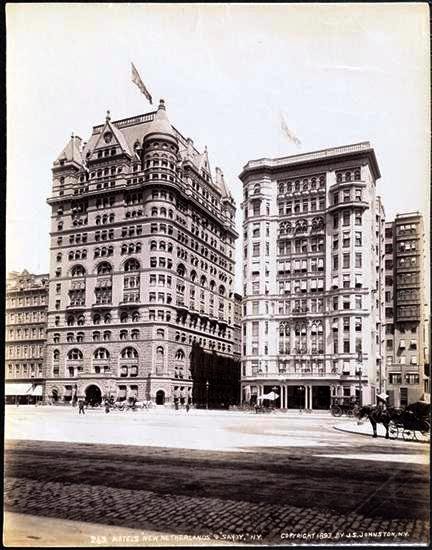
In 1892, at the same time that the original Plaza Hotel was inaugurated, the Savoy Hotel opened just opposite in Grand Army Plaza in the place of an old saloon that the New York Times had described in 1891 as follows: “The saloon is a relic of the days when that part of New York was unsettled and covered with huts of squatters…..One by one palaces drove out the shanties, and the goats retired to the lonely fastness of Harlem.” The Savoy Hotel was indeed built to rival the Plaza. The lobby was lavish with frescos by Italian painter Virgilio Tojetti, African marble pillars, and inlaid with mother-of-pearl. It was indeed the triumph of opulence.
The former U.S. Minister to Austria-Hungary, John Jay, was a permanent resident of the Savoy and died in his hotel room in 1894 from consequences of being run over by a taxi near Grand Central Station in 1890.
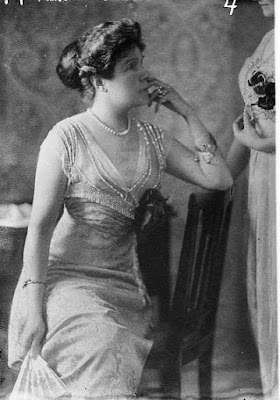
We may never know if during his stay at the Savoy he ran into Princess Eulalia, the Infanta of Spain who picked the Savoy over the Plaza Hotel for her royal visit to New York. He could have had two words with her regarding his grandfather John Jay, (the first Chief Justice of the US) who had been appointed Minister to Spain in 1779 but was rejected by the Spanish royal court which refused his nomination as it did not recognize the independence of the United States.
The Royal visit was covered by all major newspapers and was a blow for the Plaza Hotel. On that occasion la crème de la crème of New York was introduced to the Infanta, with the exception of the two biggest names of Gotham, the Astors and the Vanderbilts. It was however, reported by the New York Times that the Spanish Prince and the Princess were several times seen pointing in the direction of the lavish mansion of the Vanderbilts just across Grand Army Plaza.
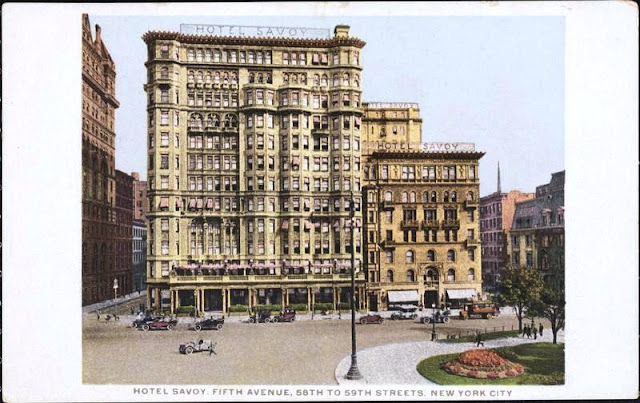
The Savoy Hotel did not last long either. The Victorian hotels were falling out of favor and the Savoy was overshadowed by the new splendid Plaza Hotel. The Savoy was then demolished and it reopened on October 1, 1927, as the Savoy-Plaza Hotel. This time the new hotel was a majestic 33-story building designed by McKim, Meade & White in white brick with a gigantic peaked roof overlooking Grand Army Plaza, and was now the perfect match for the Plaza Hotel. All three Grand Army Plaza hotels have been demolished and rebuilt in rapid succession, the Plaza three times and the Sherry-Netherland and the Savoy-Plaza twice.
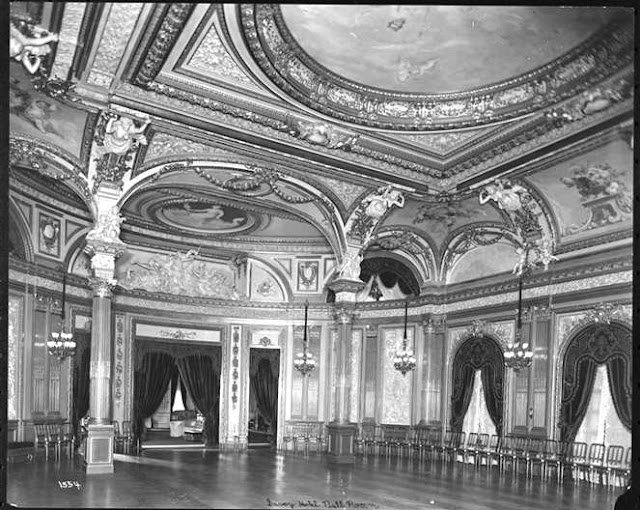
The Plaza Hotel, however, had its royal revenge in 1909 when Princess Elisabeth Lwoff-Parlaghy of Hungary moved into the hotel with her large entourage and gave a whole new meaning to “pets are welcome.” The Princess had in fact an assortment of pets: a dog, a cat, a guinea pig, two small alligators, a bear and a lion cub named Gold Fleck, who apparently loved the bathtub of the 14-room suite she rented at the Plaza. The Princess probably had to thank famous star British actress Mrs. Patrick Campbell who, on her second tour to the US, in 1907, checked into the brand-new Plaza with 100 trunks just to be told that they did not accept dogs. She had a fit and threatened to check out if her dog, a monkey griffon named Pinky Panky Poo was not allowed in and, just like magic, in pure New York flexibility, the Plaza Hotel immediately changed its policy and began welcoming small dogs.











